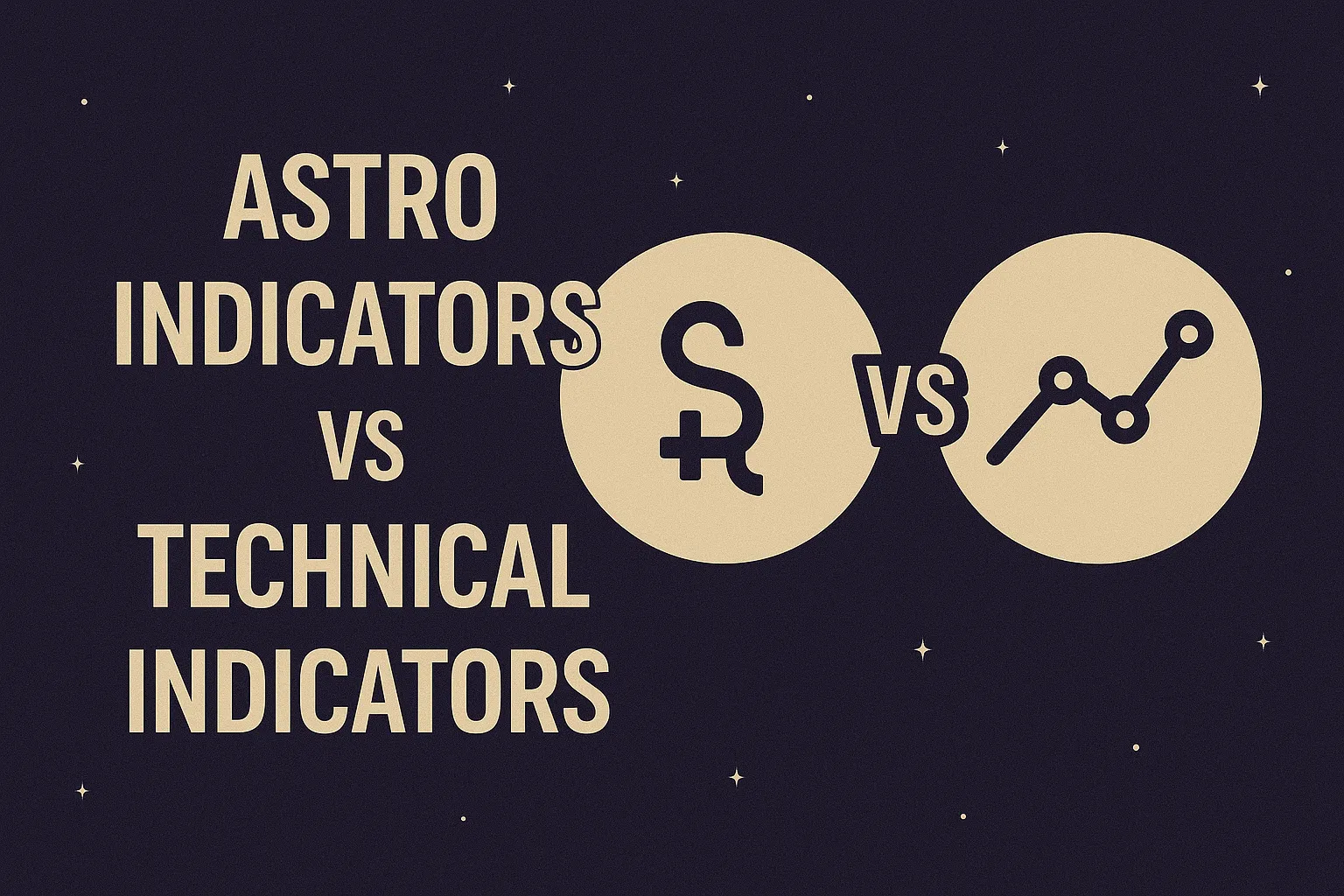Astro Indicators vs Technical Indicators
In the world of stock trading, timing is everything. Traders rely on various tools to forecast price movement, with technical indicators dominating modern platforms. However, a growing number of market participants are exploring astro indicators—tools derived from Vedic astrology—to gain an edge.
This article compares astro indicators and technical indicators, exploring their differences, benefits, and how they can be used together for a more holistic trading strategy.
What Are Astro Indicators?
Astro indicators are derived from planetary movements, Nakshatras, Dashas, and transits. These indicators help traders determine:
- Favorable or unfavorable days for trading
- High-risk periods based on retrogrades or conjunctions
- Sectors likely to perform based on planetary influence
- Emotional or psychological patterns linked to moon phases or transits
These tools are used more for market timing and psychological readiness than price levels.
What Are Technical Indicators?
Technical indicators are mathematical formulas applied to price, volume, or open interest data to predict future movement. Popular examples include:
- Moving Averages
- RSI (Relative Strength Index)
- MACD (Moving Average Convergence Divergence)
- Bollinger Bands
- Fibonacci Retracements
These are visual, data-driven tools that provide entry/exit signals, trend strength, and momentum cues.
Key Differences Between Astro and Technical Indicators
| Feature | Astro Indicators | Technical Indicators |
|---|---|---|
| Based On | Planetary positions, transits, Nakshatras | Price, volume, and time-based data |
| Nature | Predictive and psychological | Reactive and price-specific |
| Timeframe Use | Often macro (days/weeks) | Intraday to long-term |
| Precision | Abstract; requires interpretation | Precise signals and levels |
| Popular Use | Used by select astrologers and traders | Widely adopted by retail and institutional traders |
| Emotion Control | Helps in aligning energy and mindset | Helps in managing trades and stops logically |
When to Use Astro Indicators
- To avoid high-risk trading days (e.g., eclipses, Mercury retrograde)
- To align with favorable planetary transits
- For psychological readiness and energetic clarity
- During Muhurat trading or special events
When to Use Technical Indicators
- For exact entry and exit points
- To assess trend strength, volume spikes, and divergence
- In backtesting and rule-based strategies
- During short-term or intraday trading
Can They Work Together?
Yes. Many experienced traders now combine both systems:
- Astro indicators are used to time market phases, avoid impulsive decisions, and assess macro energy.
- Technical indicators are used to execute precise trades based on price action and trend confirmation.
For example:
- A trader may use Vedic astrology to identify that a certain week is astrologically favorable.
- Within that week, technical analysis may provide the best day or price level to enter the trade.
Conclusion
Astro indicators and technical indicators serve different but complementary purposes. While technical tools are rooted in data and logic, astro indicators offer timing insights based on cosmic cycles. Traders who embrace both systems may gain a deeper understanding of not just when to trade, but why the market behaves in a certain way.
The key is not to rely solely on one approach, but to integrate the strengths of both for smarter, well-timed decisions.
FAQs
1. Are astro indicators accurate for trading?
They are effective for timing and emotional clarity but not meant to provide specific price targets. They work best when combined with other tools.
2. Can I backtest astro indicators like technical ones?
Not in the traditional sense, but historical planetary events can be reviewed to correlate with market behavior.
3. Do professional traders use astrology?
Yes, especially in India. Many traders consult astrologers for timing decisions or to avoid volatile periods.
4. Which is better: astrology or technical analysis?
Both have unique strengths. Technical analysis offers precision; astrology adds a psychological and timing layer.
5. How do I start using astro indicators?
Begin by tracking major planetary transits, Nakshatras, and retrogrades using a Panchang or astrology calendar.
